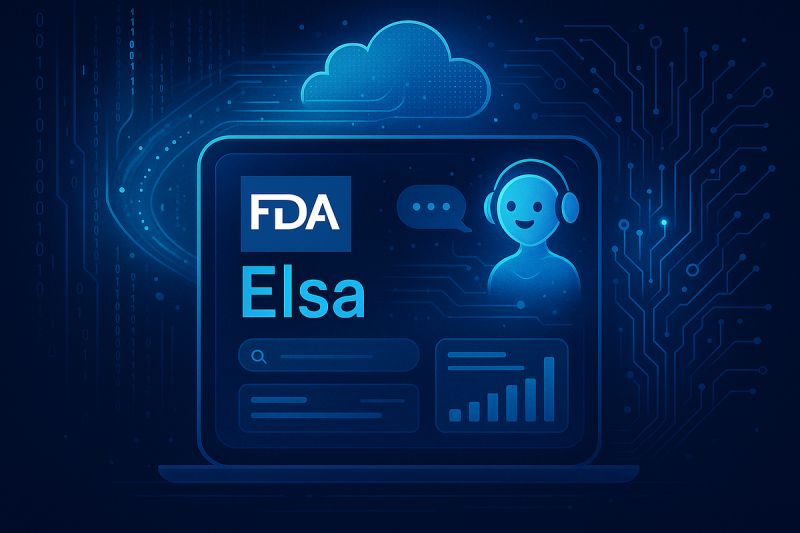Introduction: A Regulatory Tipping Point
When the United States Food and Drug Administration publicly confirmed that it has integrated a generative-AI engine code-named “Elsa” into every review center, it marked more than a tech upgrade inside a cautious bureaucracy. It signaled the moment when artificial intelligence left the realm of experimental pilots and entered the core of mainstream operational strategy. For small and medium businesses across Canada and the United States, that single government decision is a bright flashing indicator that the age of AI democratization has arrived.
Why the FDA’s Decision Matters Beyond Washington
Government agencies move deliberately because they must balance innovation with accountability. If an organization tasked with safeguarding public health can rely on AI to accelerate new drug reviews, trace hazardous food batches, and monitor adverse-event reports, then private companies with lower regulatory exposure can almost certainly leverage similar tools with fewer obstacles. The FDA has effectively de-risked the concept of AI for the rest of us, showing that, with the right governance, machine intelligence can coexist with tight compliance requirements.
For entrepreneurs in Halifax, franchise owners in Chicago, and e-commerce operators in Vancouver, the implications are clear. AI has matured from “nice-to-have” into “need-to-compete.” Any business still stuck in spreadsheets risks falling behind faster than at any time since the cloud revolution.
A Snapshot of the Productivity Gap
Research from the Business Development Bank of Canada reports that SMEs adopting AI-powered analytics grow revenue twenty percent faster than peers who are still dependent on manual reporting. In the U.S., a Small Business Administration survey shows that owners who deploy AI-driven inventory optimization cut stockouts by thirty percent within six months. These numbers illustrate a widening productivity gap that will only accelerate as generative models become more specialized and affordable.
Add the FDA’s real-time performance metrics, clinical summary drafts prepared in minutes instead of days, and we see a broad pattern. Whether processing lab data or quarterly sales, AI thrives on structured information and repeatable tasks. The same logic applies to your client invoices, shipping logs, or social media calendars.
The Cross-Border Funding Tailwind
Federal momentum rarely travels alone. Ottawa’s Budget 2024 includes one hundred million dollars for the National Research Council’s new AI Assist Program, specifically designed to help SMEs adopt off-the-shelf AI without hiring in-house data scientists. South of the border, the CHIPS and Science Act allocates millions for regional innovation hubs that provide subsidized access to compute resources and AI mentorship. For business owners, these programs represent a double benefit: they offset initial costs and validate AI’s strategic value at a national policy level.
Multiple Perspectives on Value Creation
Operational Efficiency
Manufacturing firms typically face tight margins. AI-enabled predictive maintenance reduces unplanned downtime by identifying vibration or temperature anomalies before machines fail. A mid-sized plastics plant in Ontario saved eight hours of production per month, equivalent to an additional forty-eight thousand dollars in annual output, after installing a low-cost sensor network connected to a cloud-based AI dashboard.
Customer Experience
A boutique logistics provider in Phoenix integrated a large-language model into its customer portal. The AI now generates real-time status updates, proactively reroutes shipments around weather disruptions, and answers routine inquiries. Ticket resolution time fell by fifty percent, freeing human agents to handle high-value client negotiations.
Strategic Insight
Retailers with multiple locations face volatile demand patterns. By feeding historical sales and local event data into a forecasting model, a regional apparel chain in Quebec increased its sell-through rate by twelve percent while cutting excess inventory in half. That improvement translates directly into stronger cash flow and reduced warehousing costs.
Governance Lessons from a Federal Playbook
The FDA maintains a rigorous validation pipeline: humans review every AI output, compliance teams audit data provenance, and cybersecurity specialists silo sensitive datasets from public internet exposure. While an average SMB cannot replicate the agency’s entire protocol, key principles transfer readily.
- Human Oversight remains indispensable. AI suggestions should inform decisions, not replace them.
- Transparent Data Sources build trust. Document where training data originates and how it is refreshed.
- Security by Design protects client information. Select vendors that comply with Canadian PIPEDA and U.S. CCPA requirements, and ensure encryption at rest and in transit.
Applying these guardrails early prevents costly refactoring and reputational damage later.
Mapping AI to Core Business Functions
| Business Area | High-Impact AI Use Case | Outcome Benchmarks (SMB average) |
| Finance | Automated cash-flow forecasting | 15 percent reduction in working-capital gaps |
| Sales & Marketing | Personalized email and ad copy generation | 30 percent lift in click-through rate |
| Operations & Supply Chain | Demand sensing and reorder automation | 20 percent drop in stockouts |
| HR & Talent Management | Intelligent applicant screening and onboarding bots | 40 percent acceleration in time-to-hire |
| Customer Support | Multilingual chat assistants | 50 percent faster ticket closure |
These data points, sourced from North American pilot studies, confirm that AI’s benefits are not hypothetical; they are measurable today.
A Forward-Looking Competitive Landscape
Tech giants continue to release domain-specific models optimized for industries such as finance, healthcare, and logistics. Simultaneously, open-source communities are producing lightweight versions that can run securely on local hardware. The convergence of powerful public models, specialized vertical tools, and do-it-yourself frameworks means entry barriers are collapsing. Early adopters will compound gains, while late movers will fight an uphill battle against widening cost and speed disparities.
Conclusion: From Government Mandate to Market Imperative
The FDA’s wholesale embrace of AI is not an isolated case study; it is a harbinger of an economy where machine intelligence is standard operating procedure. For small and medium businesses across Canada and the United States, the calculus is straightforward. Ignore AI and risk becoming the analog outlier in a digital field. Embrace it responsibly and unlock new avenues for growth, resilience, and strategic advantage, before your competitors capture the future you meant to claim.





